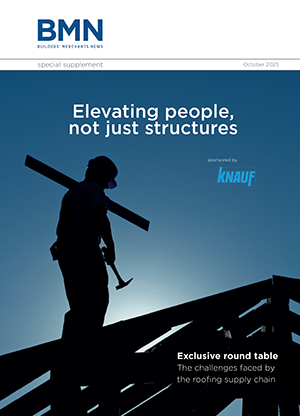The European Multifoil Manufacturers association (EMM) has voiced concern over confusion surrounding multifoil insulation product standards in the run up to the introduction of the new Construction Products Regulation.
The regulation, which will require all construction products to carry CE-marking, comes into force in July 2013. As innovative reflective multifoils do not have yet harmonised European standards, EMM says misunderstandings have arisen within the industry about the scope and content of the norm EN 16012 for reflective insulation products, published in the UK early in 2012.
EMM spokesman, Robert Menras, explained: “EN 16012 describes the test method to evaluate the declared thermal performance of reflective insulation products, including multifoils, based on the use of lab testing methodologies. The issue is that EN 16012 cannot yet lead to CE-marking as it is a supporting norm, not a product norm. A product norm for reflective insulation products is therefore being developed, but it has not yet been published. It means that EN 16012 cannot be made mandatory and can only be used on a voluntary basis.”
Initially, two CEN working groups were set up to create two supporting norms: The first, a testing standard for reflective insulation products based on lab methodologies and the second, a testing standard based on more dynamic in situ-methods to evaluate the thermal performance of all insulation products – including foam boards, mineral wool and multifoils - in real life conditions. The aim was that the two groups’ conclusions would be reached in parallel, enabling the two testing standards to come into force at the same time and feed the product standard for reflective multifoil insulation.
Robert Menras continued: “As this has unfortunately not been achieved, the European Commission has confirmed that until the findings of both working groups have been concluded, the EN 16012 standard alone will not lead to a product standard.”
EMM welcomes the fact that when the product standard for the reflective multifoil insulation industry is published, it will include a dual testing methodology, enabling the products to claim an in situ value combined with and complementing the lab value.
Robert Menras added: "Even if there appears to be a debate on which testing method will be more robust and applicable – lab or in situ – the reality is that the future will reconcile both. This will impact not only on the multifoil industry, but on the insulation industry as a whole, as the EN supporting standard for in situ testing will apply to all insulation materials, not just reflective multifoils. We are happy about this because it will give customers and consumers a true picture of the performance gap which may occur between what is measured in lab and what is actually achieved in real life, evidence also recognized by the DECC in a recent publication about the Green Deal.”






